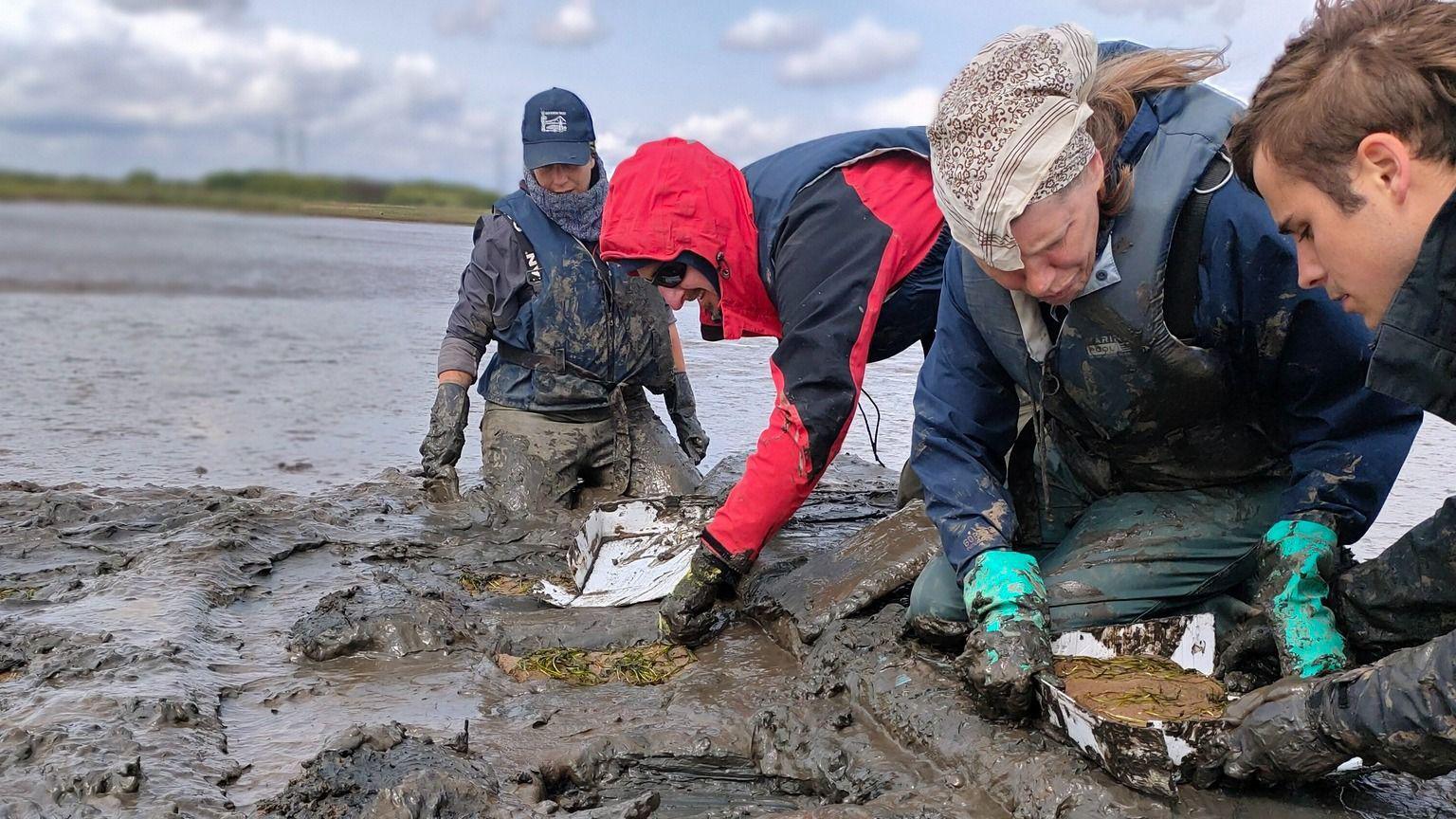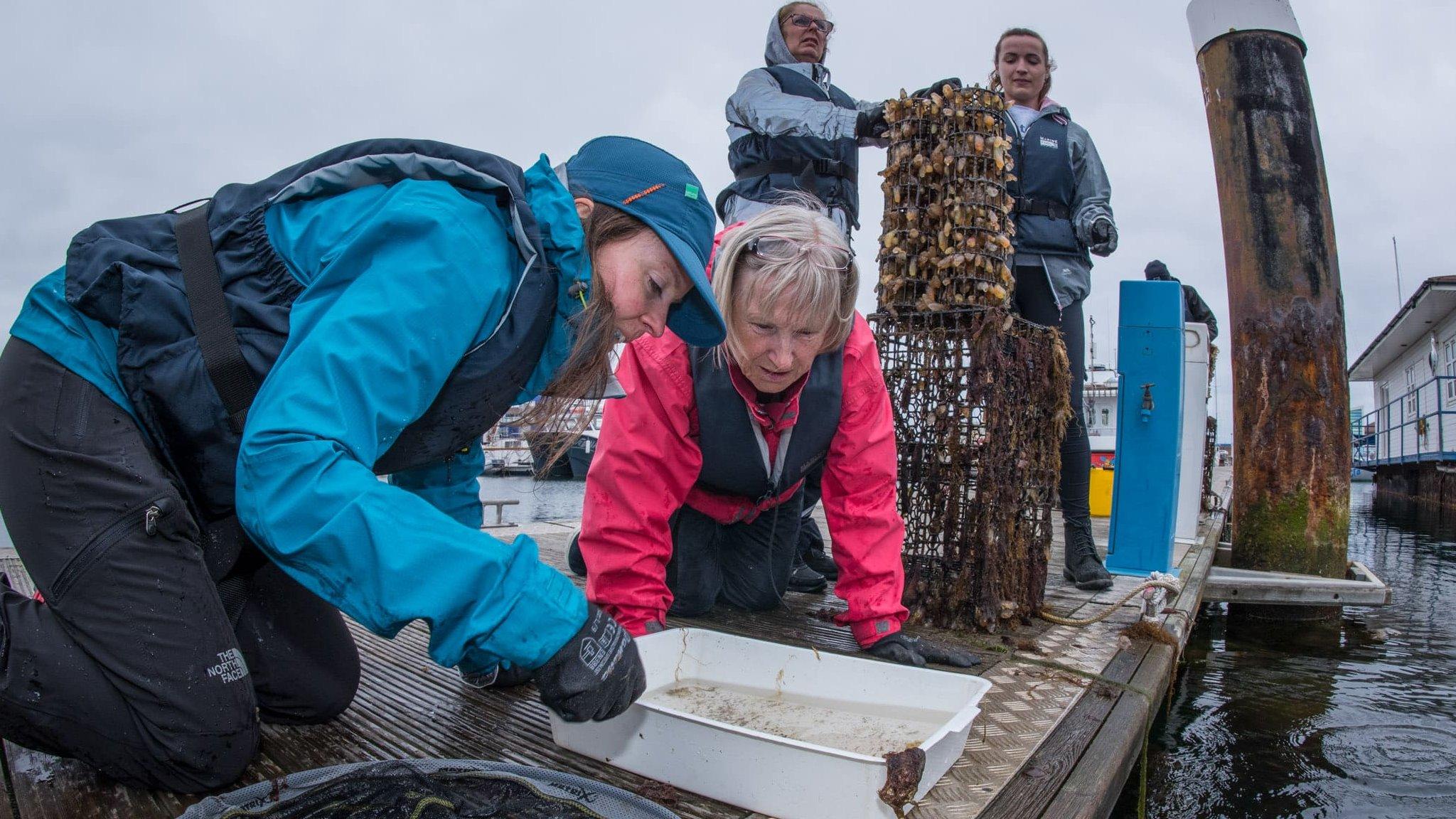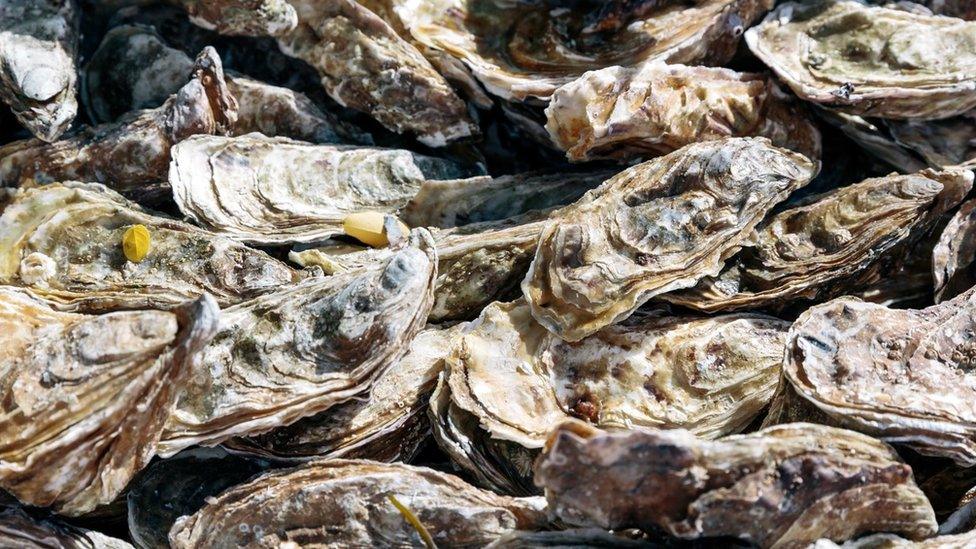Seagrass planted to revive lost meadow

The first seagrass plants since 1969 have been planted at Greatham Creek
- Published
Volunteers have planted hundreds of seagrass plants in the Tees Estuary after two failed attempts in recent years.
The Tees River Trust is using more mature plants this year after a previous effort was ruined by a storm and another by suspected human interference.
The process began last August with volunteers collecting seeds which were then planted in January. They have now been placed in the estuary at Greatham Creek.
Programme manager Judy Power said the team hopes it will be third time lucky trying to get seagrass to grow in the Tees.
The estuary is designated as a European Marine Site (EMS) and is home to seals, salmons and herons.
Seagrass meadows have been declining globally at a rate of about 7% every year since 1990.

Initial survey results have shown promising signs of success for the planting
The planting process took several days but was completed last week and an initial survey looks promising.
Ms Power said: "The nursery is the only one of its kind in the North East.
"This is the third year of growing the plants and the team have already achieved one of the highest rates of germination in the UK."
The trust has also installed two native oyster nurseries around Hartlepool and built a native oyster breeding pond.
Follow BBC Tees on X,, external Facebook, external, Nextdoor and Instagram, external.
Get in touch
Do you have a story suggestion for BBC Tees?
Related topics
- Published10 August 2023

- Published27 July 2022

- Published29 June 2022
